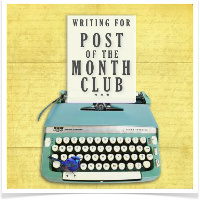Norway’s two most famous artists, painter/printmaker Edvard Munch and sculptor Gustav Vigeland, were not only contemporaries, but bitter rivals. Munch, whose famous painting The Scream may have given him a leg up over Vigeland in death, was quoted to have forbidden a single cent of the taxes he paid to the state to be used for the construction of Vigelands Park, filled with over 200 sculptures by his nemesis, in 1921.
It was a gloomy, rainy afternoon when Marlon, my sister and I visited the Munch Museum in Oslo.
The weather turned out to be perfectly suited to Munch’s works. His paintings, and the prints he made of them, are filled with anguish, despair, betrayal, and life’s darkest colors. In Munch’s world, lovers only leave and betray; jealousy turns men into hollow-eyed corpses. Pretty heavy stuff for a Sunday afternoon.
Yet amidst the darkness of his worldview, some bright spots stand out vividly.

“The Seducer”… but who is seducing whom?
We saw some of his most famous works, such as his Madonna…
… and The Scream, which was accompanied by his journal entry about the evening that inspired the painting.
Munch was what we would today call a multimedia artist: he not only painted, but made prints, took photographs and films, and wrote about his work. “It was a Time during which Life had ripped open my Soul,” wrote Munch. “I felt a huge Scream—and I really did hear a huge Scream…”
Munch’s world is definitely not a pretty place. But the power he has to draw you into it, to mesmerize you with pain and paint, cannot but be admired.

Consolation and The Death of Marat, my favorites from this museum
In contrast, it was a bright, sunny day when we went to Vigelands Park, a park dedicated to Munch’s most bitter rival.
At first, Vigeland seems to be the antithesis of Munch. His figures play, leap, laugh and run, with joy coursing through bones, muscles and veins of bronze. Set against a brilliant blue sky, this boundless energy and happiness was a bit of a relief after Munch, to be honest.
But walk deeper into the park and happiness slowly begins to acquire a darker, deeper tinge. Mingling with loving embraces and tender gazes…
are scenes of frustration, punishment…
… even desperation.
By filling the park with 212 statues, Vigeland is able to show a wide range of life’s nuances and subtleties, at every stage of life from birth to death.
With so many sculptures, every visitor is bound to find something that speaks to him or her intimately.
For me, what I noticed most were the sculptures of babies. Maybe it’s because of where I am right now in life: having a baby is on my mind a lot these days, and while I’m not 100% ready for it, I am looking forward to that next chapter. At first, it seems Vigeland does not provide encouragement to would-be parents.
Scary, right? I found the sculpture of the baby gagging his mother with her hair particularly disturbing. Overwhelmed and overrun, these parents echo the stories my mom friends have told me about the early days of motherhood, and I can’t help but feel apprehensive.
But then with one piece, Vigeland wiped that all away. This one piece, with all its tenderness and strength, told me to go for it anyway. That maybe, in the midst of all my questions and apprehensions, I would find something that would make it all worth it.
I can’t help but think that Munch speaks to my gaga-for-love days of yore, while Vigelands speaks to who I am now, and maybe who I am about to become. These rivals may have been at odds in their own lives, but somehow, set against the lives of those who behold their work, they have found a way to complement one other.





















